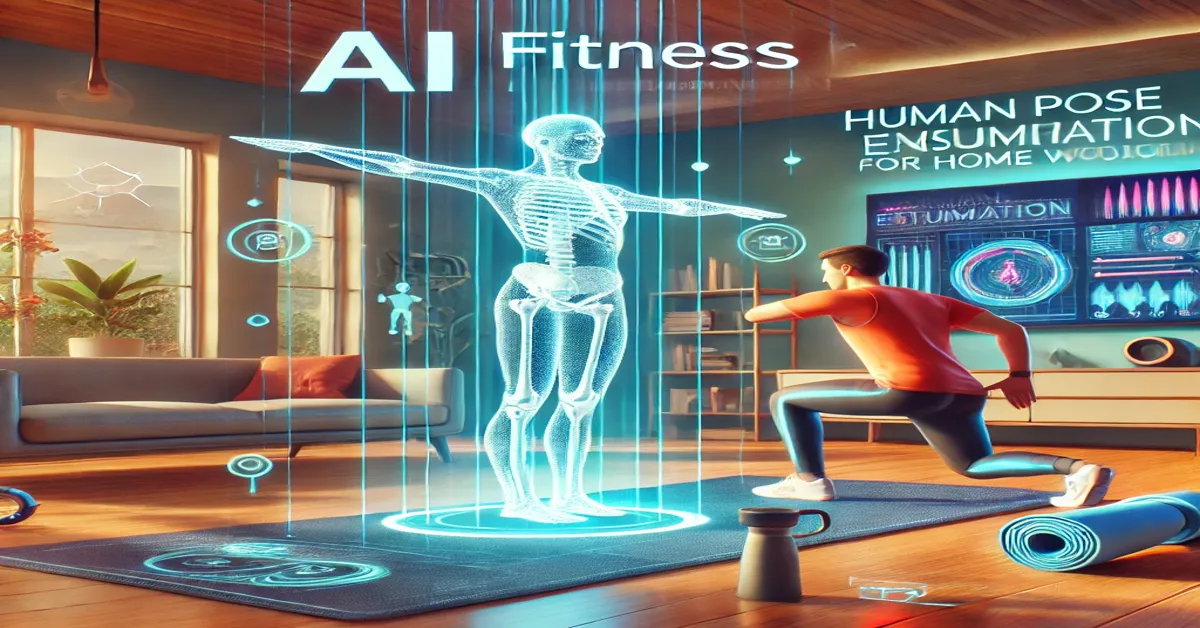The fitness industry is undergoing a remarkable transformation with the advent of artificial intelligence (AI) technologies. Among these innovations, the concept of an AI fitness trainer using human pose estimation has gained significant attention. This cutting-edge technology promises to make personalized fitness guidance accessible to everyone, regardless of their experience level or location. By analyzing human body movements in real time, AI fitness trainers can provide feedback, ensure proper form, and even design tailored workout routines.
In this article, we’ll dive into how AI fitness trainers leverage human pose estimation, explore the technologies behind it, and examine how this innovation is shaping the future of fitness – AI fitness trainer using human pose estimation.
What Is Human Pose Estimation?
Human pose estimation is a computer vision technique that identifies and tracks key points of the human body, such as joints, limbs, and facial features, in an image or video. Using algorithms powered by deep learning, it maps a person’s skeletal structure in real time, enabling accurate analysis of their movements – AI fitness trainer using human pose estimation.
Key Technologies in Human Pose Estimation
Several frameworks and tools have been developed to implement human pose estimation effectively. These include:
- MediaPipe: Known for its lightweight and efficient pose detection pipeline.
- OpenPose: A robust framework capable of multi-person pose estimation.
- AlphaPose: Renowned for its high accuracy in detecting human key points.
- YOLOv7: Offers fast object and pose detection for real-time applications.
These technologies form the backbone of AI fitness trainers, allowing them to understand human motion and provide actionable insights.
How AI Fitness Trainers Use Human Pose Estimation
AI fitness trainers combine pose estimation with other AI technologies to deliver a seamless and interactive workout experience. Here’s how they work:
Real-Time Feedback
One of the most significant features of AI fitness trainers is their ability to provide instant feedback on your form and posture. By detecting key points such as shoulders, hips, and knees, the system can identify incorrect movements and suggest adjustments to prevent injury.
Guided Workouts
AI trainers can guide users through exercises like squats, lunges, or push-ups by displaying visual cues and offering voice instructions. This ensures that users perform exercises with proper alignment and technique.
Progress Tracking
Human pose estimation allows the AI to monitor user performance over time. By analyzing repeated movements, the trainer can track improvements in flexibility, strength, and endurance, providing motivation and tailored progress reports.
Custom Workout Plans
Based on a user’s fitness level and goals, AI trainers use pose estimation data to design personalized workout routines. These routines adapt dynamically as the user progresses.
Benefits of an AI Fitness Trainer Using Human Pose Estimation
The integration of human pose estimation into fitness training brings numerous benefits, making it a game-changer for both beginners and seasoned fitness enthusiasts.
Accessibility
AI fitness trainers eliminate the need for expensive gym memberships or personal trainers. Users can access expert guidance from the comfort of their homes.
Personalization
Unlike generic workout videos, AI trainers tailor exercises to individual needs, ensuring that users receive the most effective and safe training for their goals.
Injury Prevention
Poor exercise form can lead to injuries. AI fitness trainers detect and correct improper movements in real time, significantly reducing the risk of strain or injury.
Convenience
Whether you’re on a busy schedule or traveling, an AI fitness trainer is always available, providing flexibility and consistency in your workout routine.
Applications of AI Fitness Trainers in the Real World
AI fitness trainers using human pose estimation are not just theoretical concepts—they are actively being implemented in various settings.
Home Workouts
Many fitness apps now integrate pose estimation technology, offering interactive features for home workouts. These apps use a smartphone or webcam to analyze movements and provide real-time corrections.
Virtual Fitness Classes
Gyms and fitness studios are incorporating AI trainers into virtual classes, creating a hybrid model that combines traditional training with AI-driven guidance.
Rehabilitation and Therapy
In physical therapy, human pose estimation assists patients in performing recovery exercises correctly. AI trainers ensure adherence to prescribed movements, improving recovery outcomes.
Competitive Sports Training
Athletes and coaches use AI pose estimation to analyze performance, refine techniques, and gain a competitive edge.
Challenges in Implementing AI Fitness Trainers
Despite their potential, AI fitness trainers face several challenges that need to be addressed for widespread adoption.
Hardware Limitations
Accurate pose estimation requires high-quality cameras and sufficient processing power, which may not be available to all users.
Privacy Concerns
AI systems analyze and store user data, raising concerns about privacy and data security. Ensuring compliance with data protection laws is essential.
Variability in Human Movement
Every individual’s body structure and movement patterns are unique. Designing systems that adapt to this variability without compromising accuracy is a complex task.
Cost of Development
Developing AI fitness trainers with advanced pose estimation capabilities involves significant investment in technology and research.
The Future of AI Fitness Trainers Using Human Pose Estimation
As technology continues to evolve, the capabilities of AI fitness trainers will only expand. Here are some trends that could shape their future:
Enhanced Accuracy with AI Advancements
Improvements in deep learning algorithms will enhance the precision of pose estimation, allowing trainers to provide even more detailed feedback.
Integration with Wearable Devices
AI fitness trainers could integrate with wearable devices like smartwatches and fitness bands, combining motion data with biometric metrics for comprehensive insights.
AR and VR Integration
Augmented and virtual reality could transform the workout experience by creating immersive environments where users can train with virtual coaches.
Broader Accessibility
As technology becomes more affordable, AI fitness trainers will become accessible to a wider audience, democratizing fitness expertise.
Conclusion
AI fitness trainers using human pose estimation are revolutionizing the fitness industry by offering personalized, accessible, and effective training solutions. By leveraging cutting-edge technologies like MediaPipe, OpenPose, and AlphaPose, these trainers provide real-time feedback, prevent injuries, and help users achieve their fitness goals from the comfort of their homes. As advancements continue, the integration of AI and fitness will only deepen, paving the way for smarter, safer, and more engaging workout experiences.
FAQs
What is human pose estimation?
Human pose estimation is a computer vision technique that maps key points of the human body to analyze movements in real time.
How does an AI fitness trainer work?
An AI fitness trainer uses pose estimation to monitor your movements, provide real-time feedback, and guide you through exercises.
Can AI fitness trainers prevent injuries?
Yes, by detecting incorrect form and suggesting adjustments, they significantly reduce the risk of exercise-related injuries.
What equipment is needed for AI fitness trainers?
Most AI fitness trainers require a smartphone or webcam for motion analysis, and some may integrate with wearable devices.
Are AI fitness trainers suitable for beginners?
Absolutely, they cater to all fitness levels and provide personalized guidance, making them ideal for beginners.
What are the privacy concerns with AI fitness trainers?
AI fitness trainers analyze user data, so ensuring secure data storage and compliance with privacy laws is crucial.







